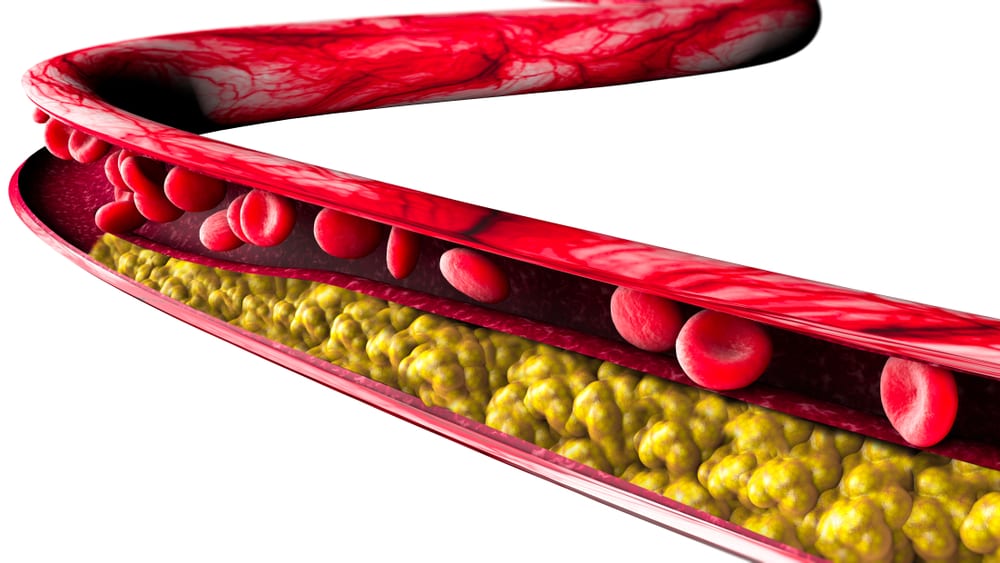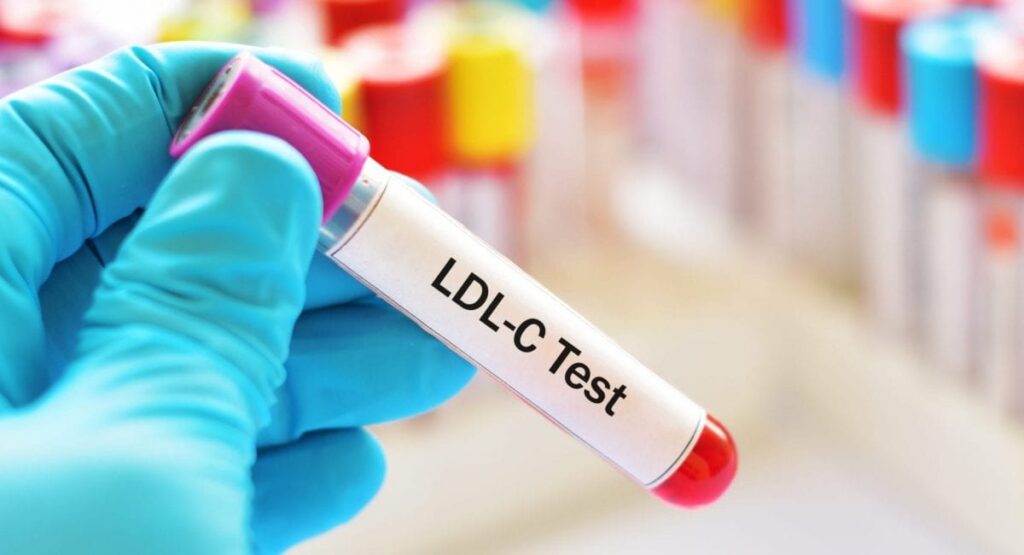Work With a Doctor Who Really Gets It
Looking for a more individualized approach to your health? Confused about how all the contradictory health advice applies to you? Looking to break free from our failing healthcare model? We have you covered.
Request a medical consult from Dr. Scher today!
Let’s Talk
Send us a message and let us know how we can help you.
Consult With Dr. Scher
The initial consultation is $1,495. Contact Dr. Scher today to see if you qualify.
You can take charge of your health.
Let Dr. Scher show you how.
Let’s Talk
Send us a message and let us know how we can help you.
Meet Dr. Scher, MD
The Low Carb Cardiologist

Hi, I’m Dr. Scher, and I’m changing the direction of preventive cardiology to better serve more people like you with the care you deserve. I’m also the CEO and Lead Physician at Boundless Health and the Low Carb Cardiologist. I spent the past 15 years as a frustrated board-certified cardiologist. My patients weren’t achieving their optimal health, and I didn’t have the time or resources to guide them. That’s why I sought out additional certifications in lipidology, nutrition, personal training, functional medicine, and behavioral change.
It is through this specialized training and working with thousands of patients I recognized how to provide better care. Your health is too important to trust to guidelines designed for the ‘average’ person. You are not average, nor should you want to be!
I’m glad you’re here. It tells me you know you deserve better care. I can’t wait to get started finding your path to true health.
Bret Scher, MD FACC
Board Certified Cardiologist and Lipidologist
Yes, People LOVE Dr. Scher’s Approach

Did you know changing the way you eat may be able to normalize your blood pressure completely? For many people it’s true. But what’s surprising is that it isn’t changing to the diet that most doctors and dieticians recommend.
The DASH diet, Dietary Approach to Stop Hypertension, has long been the “go-to” diet for reducing blood pressure. The DASH diet is a high carbohydrate, low fat diet that recommendseating plenty of fruits, veggies, whole grains, and limiting salt and saturated fat. And while that works for some people, many others can normalize their blood pressure with a nearly opposite approach.
A 2023 study published in The Annals of Family Medicine, demonstrated that a very low carbohydrate diet with no limitations on the amount of salt or the amount or type of fat eaten was better at lowering blood pressure compared to the DASH diet.
Many wonder how this could be, but the answer is pretty straightforward.
Poor metabolic health, from insulin resistance to type 2 diabetes, is a leading cause of high blood pressure. And low carb diets are one of the best lifestyle approaches for improving or even normalizing metabolic health. Therefore, it makes complete sense that a low carb diet would be highly effective at normalizing blood pressure.
Of course there are many other ways to improve blood pressure, such as quitting drugs, tobacco and alcohol, getting regular exercise, managing stress, etc. And these are very important. But since everyone has to eat, it is powerful to eat in a way that can normalize blood pressure.
Let’s explore four ways how low carb diets can help blood pressure.
1- Weight loss
Having overweight or obesity is a strong contributing factor to high blood pressure. And while low-carb eating isn’t the only way to lose weight, it tends to be as good as or even better than low fat eating for weight loss. Some publications even demonstrate weight loss on par with highly effective GLP1 weight loss drugs like Ozemipic and Wegovy.
2- improved metabolic health
As mentioned, metabolic dysfunction is a clear trigger for elevated blood pressure. And while low carb eating isn’t the only way to improve metabolic health, it is likely the most effective dietary pattern for improving metabolic health, and can even do so with or without weight loss.
3- Ketosis
If someone lowers their carbohydrate intake enough, they can enter a state of ketosis, a normal physiologic state where we burn primarily fat for energy instead of carbohydrates. When this occurs, our insulin levels drop to a normal level and we have a natural diuresis, meaning we eliminate sodium and water more than usual. This can help lower blood pressure above and beyond weight loss.
4- Avoiding processed foods
Most well formulated low carb diets avoid highly processed junk foods like potato chips, candy, doughnuts, etc. that can lead to high blood pressure. So, simply eliminating these foods can also contribute to lower blood pressure.
What about salt?
One of the big misconceptions about blood pressure is that we all need to lower our salt intake for better blood pressure. However, this appears to be a gross over-generalization. There’s a growing understanding that a minority of individuals have “salt sensitive” hypertension. This means that the majority are unlikely to affect their blood pressure by altering their salt intake.
Furthermore, where we get our salt likely makes a difference. For insurance, if someone is getting their salt from highly processed foods like chips, pretzels, etc, they are hit with an ultra-processed combination of salt, calories, carbs, and sugars that is bound to raise blood pressure.
But what if someone is eating whole foods like broccoli, cauliflower, steak, and avocado, and they add salt to that meal? Clinical experience suggests our bodies react much differently to this type of salt exposure, and people can dramatically lower their blood pressure despite adding salt to their diet.
Low Carb Eating Works
So while it may not be the right approach for everyone, it is increasingly clear that eating a well-formulated low carb diet is a safe and effective way to lower blood pressure. It’s time to include low carb diets as a first line treatment option for normalizing blood pressure.
Thanks for reading!
Bret Scher MD FACC

A new study published in the European Heart Journal says we should care about blood levels of a metabolite trimethylamine N-oxide (TMAO), but is that true?
NBC News: Study explains how red meat raises heart disease risk
For starters, this was a well run and controlled study. Researchers randomly assigned 133 subjects to one of three isocaloric diets with the only difference being the presence of red meat, white meat, or vegetarian protein. Similar to the study by Dr. Ludwig that we referenced earlier, a strength of this study was that the study team supplied all meals for the subjects. Therefore, there was no guessing about what the subjects ate or if they complied with the recommendations. That makes this a strong nutritional study.
Subjects stayed on each diet for four weeks and then had a washout period before transitioning to the next diet. The main take home is that eating red meat increases the blood level of TMAO, which declines after four weeks off the red meat diet. As described in the article:
a red meat diet raises systemic TMAO levels by three different mechanisms: (i) enhanced nutrient density of dietary TMA precursors; (ii) increased microbial TMA/TMAO production from carnitine, but not choline; and (iii) reduced renal TMAO excretion. Interestingly, discontinuation of dietary red meat reduced plasma TMAO within 4 weeks.
It is important to note in our era of frequent conflicts of interest, NBC news reported that the lead investigator for the study is “working on a drug that would lower TMAO levels.” While that in no way invalidates the findings, it does legitimately raise suspicion for their importance.
Interestingly, the study did not test eggs, another food reportedly linked to TMAO. They did, however, note that increased choline intake, the proposed “culprit” in eggs, had no impact on TMAO levels.
The study also did not investigate fish. Fish, traditionally promoted as “heart healthy,” has substantially higher concentrations of TMAO than meat or eggs. One thought, therefore, is that high TMAO levels are produced by gut bacteria rather than the food itself. Although this is an unproven hypothesis, it would also explain variability among subjects.
Now for the harder question. Does any of this data matter? For this study to be noteworthy, we have to accept the assumption that TMAO is a reliable and causative marker of heart disease.
The main NEJM study linking TMAO to an increased risk of cardiovascular disease is not as conclusive as many promote. First of all, only those at the upper quartile of TMAO level had a significant increase in cardiovascular disease risk. Lower elevations had no significant correlation.
Second, those with increased TMAO and cardiovascular disease risk also were more likely to have diabetes, hypertension and a prior heart attack; furthermore, they were older, and their inflammation markers, including myeloperoxidase, a measurement of LDL inflammation, were significantly higher. With so many confounding variables, it is impossible to say the TMAO had anything to do with the increased cardiovascular disease risk.
This study in JACC that saw a correlation with TMAO and complexity of coronary lesions, also found an increased incidence of diabetes, hypertension, older age in the high TMAO group.
Finally, this study found no association at all between TMAO levels and increased risk of cardiovascular disease.
Based on these mixed findings, the jury is still out, and we have plenty of reason to question the importance of elevated TMAO as an independent risk marker or causative factor of coronary disease.
Most importantly, however, since multiple studies continue to show no significant association between meat and egg consumption and increased heart attacks or mortality risk (references here, here, here, here and here) the weak surrogate markers don’t seem likely to matter much. Don’t get caught in the minutiae. Focus on a real-food diet that helps you feel better and improves the vast majority of your markers. And if you have elevated TMAO, the studies suggest you should also check your blood pressure, blood sugars, and inflammatory markers as they may also be elevated. In my opinion, until we have much more convincing data on TMAO, you are far better off targeting those more basic parameters than a blood test of questionable value.
Thanks for reading,
Bret Scher, MD FACC

Don’t look now, but the updated clinical practice cholesterol guidelines from the American College of Cardiology, the American Heart Association and others are getting personal. Although the guidelines still contain their familiar approach — that I consider too aggressive with drug therapy — the latest 2018 version of the guidelines now includes an impressive update to emphasize lifestyle intervention, plus a more individualized approach for risk assessment.
MedPage Today: AHA: Revised Lipid Guide Boosts PCSK9s, Coronary Calcium Scans
Could this be the start of a progressive trend away from shotgun statin prescriptions? I sure hope so.
Prior guidelines emphasized the 10-year ASCVD risk calculator as the main determining factor for statin therapy. In the 2018 update, the guidelines acknowledge that the calculator frequently overestimates the risk in those individuals who are more involved with prevention and screening. (In other words, those patients more interested in and proactive about their health; I find many in the low-carb world fall into this category.)
The ensuing discussion with a healthcare provider should then focus on:
[T]he burden and severity of CVD risk factors, control of those other risk factors, the presence of risk-enhancing conditions, adherence to healthy lifestyle recommendations, the potential for ASCVD risk-reduction benefits from statins and antihypertensive drug therapy, and the potential for adverse effects and drug–drug interactions, as well as patient preferences regarding the use of medications for primary prevention… and the countervailing issues of the desire to avoid “medicalization” of preventable conditions and the burden or disutility of taking daily (or more frequent) medications.
I appreciate the attention the new guidelines bring to the depth of the discussion that should ensue between doctor and patient. Considering the treatment burden is equally as important as the burden of disease, and possibly even more important in patients who have not been diagnosed with heart disease, these individualized discussions about trade-offs are critical to personalized care.
Also worthy of mention is the increased use of coronary artery calcium scores (CAC) to help individualize risk stratification. The updated guidelines specify CAC may be useful for those age 40-75 with an intermediate 10-year calculated risk of 7.5%-20%, who after discussion with their physician are unsure about statin therapy. They specify that a CAC of zero would suggest a much lower risk than that calculated by the ASCVD risk formula, and thus take statins off the table as a beneficial treatment option.
This is huge. I cheered when I read this! I have been critical of prior guidelines that focused on ways to find more people to place on statins. The mention of finding individuals unlikely to benefit from statins is a giant step in the right direction.
The guidelines go even further: they mention that a CAC either over 100 or greater than the 75th percentile for age increases the CVD risk and the likely benefit of a statin. A CAC between 1-99 and less than the 75th percentile does not affect the risk calculation much and it may be worth following the CAC in five years in the absence of drug therapy. I would still argue that a CAC >100 does not automatically equal a statin prescription and we need to interpret it in context, but I greatly appreciate this attempt at a more personalized approach.
The guidelines also go beyond the limited risk factors included in the ASCVD calculator by introducing “risk modifying factors” such as:
- Premature family history of CVD
- Metabolic syndrome
- Chronic kidney disease
- Chronic inflammatory conditions such as rheumatoid arthritis and psoriasis
- Elevated CRP > 2.0 mg/L
- Elevated Lp(a) > 50 mg/dL or 125 nmol/L
- Elevated triglycerides > 175 mg/dL
Although they use these criteria to define an increased risk, the opposite would likely hold true. An absence of those criteria could define a lower risk situation.
Some changes deserve mention from a controversy standpoint as well. For instance, the new guidelines recommend checking lipid levels as early as two years old in some circumstances. Two!
They also recommend statin therapy for just about everyone with diabetes with no mention of attempting to reverse diabetes before starting a statin, a drug that has been shown to worsen diabetes and insulin resistance. In addition, the new guidelines do not mention the likely discordance between LDL-C and LDL-P in those with diabetes.
Last, the new guidelines define an LDL-C > 190 mg/dL as an absolute indication for statin therapy with a treatment goal of 190 mg/dL is in familial hypercholesterolemia populations (and even then has heterogenous outcomes). There is a clear lack of data supporting that same recommendation for metabolically healthy individuals with no other cardiac risk factors and no other characteristics of familial hypercholesterolemia. This is a clear example of when a guideline turns from “evidence based” to “opinion based.”
In summary, the guideline committee deserves recognition for its emphasis on an individualized care approach, its use of CAC, and its broader description of discussing potential drawbacks of drug treatment. It still combines opinion with evidence and believes all elevated LDL is concerning, but I for one hope it will continue its progression away from generalizations and someday soon see that individual risk variations exist, even at elevated LDL-C levels.
Thanks for reading,
Bret Scher MD FACC
Originally Posted on the Diet Doctor Blog
I live in McAllen, Texas, where it’s difficult to find a doctor who’s knowledgeable on the benefits of a low-carb lifestyle. Because I battle a high A1C AND high cholesterol, I reached out to Dr. Scher for a consultation to monitor my blood work and develop a plan that will keep my heart healthy and my A1C in check. Before our video-consultation, he responded personally to every question I had via email. When I first reached out, I figured it would take at least a month or more to schedule our consultation, but to my surprise, it was planned just over a week from my initial email!
I like Dr. Scher’s commonsense approach to a healthy lifestyle. He came up with a very-easy-to-follow plan and agreed to review my bloodwork every 6-8 weeks to make sure I’m on the right track. Because of my family’s history, it’s comforting to know I have a cardiologist monitoring my health so that I can prevent a significant problem down the road.
Nicole Southwell

Can we be certain that elevated LDL (Low-density lipoprotein) particles have no meaning and can be completely ignored?
Certainly not.
Can we be certain that all LDL particles are deadly and need to be treated to microscopically low levels?
Certainly not.
So, what do we do?
I have seen countless second opinion consults and enrolled numerous clients in my Boundless Health Program who have this exact question. What’s the deal with LDL? Do we worry or don’t we?
Life is much easier when it is black and white, good and bad. I, however, believe in looking for the nuance and trying to understand things a little deeper.
But first, let’s back up a little.
What is LDL and LDL-P?
Cholesterol can be a complex topic that we frequently oversimplify, which I am about to do. In brief, LDL is known as the “bad” cholesterol, the cholesterol that is found in plaque buildup in our hearts. But the truth is that LDL is not inherently bad. In fact, LDL has a purpose in our bodies as part of our immune response and as a fuel and vitamin delivery mechanism to name a few. If vascular injury and inflammation are present, then modified LDL may invade vessel walls and participate in a cascade of events leading to plaque buildup and an eventual heart attack.
LDL-C is a measure of the total amount of cholesterol in our LDL lipoproteins. LDL-P is the total number of the LDL lipoproteins. Studies show that LDL-P is a much better marker for CVD risk than LDL-C. As an analogy, the number of cars on the road matter more than the number of people in the cars.
What are the risks of LDL-P?
On the one hand, trials in the general population show that elevated LDL-P is a risk factor for cardiovascular disease (CVD). This includes a combination of observational trials, genetic mutation trials (mendelian randomization), and drug treatment trials.
All things being equal, based on these trials alone, we should want our LDL-P to be low.
But does LDL alone cause heart attacks and death? Or are there other factors involved?
Of course there are other factors involved in CVD. Vascular injury and inflammation being the two most prominent factors.
Can lowering our LDL-P have risks greater than the potential benefits for certain populations?
Absolutely. Since primary prevention statin trials show we have to treat over 200 people for five years to prevent one heart attack with no difference in mortality, it seems reasonable that certain populations will experience more potential risk than reward.
The Low Carb High Fat Reality
How many LDL or statin trials have specifically looked at individuals on a healthy, real foods, LCHF diet?
None. Not a single one.
How many LDL or statin studies have looked specifically at red headed, left handed boys born the second week of March?
None, at least to the best of my knowledge.
This seems glib but bear with me.
Is there any reason to think a red headed, left handed boy born the second week of March would behave any differently than everyone else in these LDL studies? Not really. Especially if they are eating a standard American diet or a low -fat diet as was almost exclusively studied in every cholesterol or statin trial.
Here’s the more important question. Is there reason to believe individuals on a healthy, real foods, LCHF diet would behave any differently than everyone else in the decades of lipid and statin studies?
There absolutely is reason to believe they may behave differently. There is not clear proof, but there is plenty of reason to suspect it.
Think about the benefits of a LCHF lifestyle.
- Lowers inflammation
- Reverses insulin resistance
- Naturally raises HDL and lowers TG
- Converts majority of LDL particles to larger, more buoyant particles
- Lowers blood pressure
- Reduces visceral adiposity
Could these create an environment where an elevated LDL is less of a concern?
It sure could.
To be clear, I openly acknowledge that we do not have definitive proof that we should have no concern with LDL in this situation. In my opinion, this is a specific scenario that the existing trials simply do not address one way or the other.
So, it seems we have two choices.
- Since we don’t have any proof we can ignore LDL in this setting, we plug the numbers into the 10-year ASCVD calculator and start a statin if the risk is above 7.5%, or we ask the individual to change their lifestyle in hopes the LDL will come down.
- If the individual is enjoying multiple health benefits from their lifestyle, and they are rightly concerned about the potential risks of statin therapy, then we can follow them for any sign of vascular injury or plaque formation, or any worsening of their inflammatory markers or insulin sensitivity. In the absence of any potentially deleterious changes, we can reason that the risk is low, and the benefits of living the healthy lifestyle may outweigh the risks.
The “problem” is that the second option requires a detailed discussion of the risks and benefits. It requires close monitoring and follow up. It requires us to think outside general guidelines and consider everyone as an individual with their own unique circumstance. These are qualities that our current healthcare system sorely lacks. Yet that is the exact care that each individual deserves.
What do we do in the meantime?
I hope someday soon we will have definitive long-term evidence that a high number of large buoyant LDL particles along with elevated HDL, low TG and low inflammatory markers is perfectly safe.
Until that day, we will have to continue to talk to our patients. To see them as individuals. To weigh the lifestyle benefits with the possible risks. That includes seeing the risks in real numbers- not quoting a 30% benefit with statin therapy. Instead, having a real discussion that statins may reduce your risk a heart attack by 0.6% with an increased risk of muscle aches, an increased risk of diabetes, and a potential increased risk for cognitive and neurological dysfunction.
And we will have to understand that the answer won’t be the same for each person. And we can be OK with that.
So, do you have to worry about your LDL? I don’t know. But I welcome the opportunity to explore the question and reach the best answer for you.
Do you have questions about what your lipids may mean for you? What they mean when taken in the context of your lifestyle and overall health picture? If so, you may want to learn more about my Health Coaching Consult.
Thanks for reading,
Bret Scher, MD FACC
START A CONVERSATION
Connect with Dr. Scher to see if you qualify for the consultation.
Let’s Talk
Send us a message and let us know how we can help you.
